Today we will learn from the summary of the book “Declutter Your Mind” by Barrie Davenport and S.J. Scott.
Barrie Davenport is the founder of the award-winning personal development site live bold and bloom, a certified personal coach and online course creator, and the author of a series of self-improvement books on positive habits, life passion, confidence building, mindfulness, and simplicity.
S.J. Scott is a wall street journal bestselling author with over 30 books in the “self-improvement” genre, translated into 12 different languages. His books provide daily action plans that can be immediately implemented in critical areas such as health, fitness, work, and personal relationships
Declutter your mind will teach you the habits, actions, and mindsets you can use to clean up the mental clutter that might be holding you back from being more focused and mindful in your daily life. So let’s discover how to get a simplified, calm mental life and reclaim the time and emotional energy we give up to overthinking and anxiety!
Do you feel overwhelmed by your thoughts, struggle with stress or anxiety about the tasks you need to complete or want to stop worrying about life? If you’ve answered yes to at least one of these questions, this book & summary is definitely for you!
Chapter 1. Decluttering your thoughts
Thoughts from what we perceive to be reality impact your mental well-being. However, having too many ideas can clutter our minds. We’re incredibly affected by our negative thoughts because they tend to come back right after we slap them down. We need to work on our mindfulness to manage our thoughts, detach from the negative ones, and declutter our minds
1. Focused deep breathing
We tend to experience rapid breathing or shortness of breath when we feel overwhelmed or stressed. Slow, deep, rhythmic breathing can help us regain control of our minds. Try practising 5-10 minutes of deep abdominal breathing every day.
2. Meditation
Most meditation practices begin with sitting quietly, focusing on your breath, and ignoring any distractions that come your way. It increases productivity, promotes focus, decreases stress, boosts your overall brainpower, and promotes divergent thinking. Get started with a 10-minute daily meditation practice.
“Meditation is a way of entering into the quiet that’s already in your mind, buried under the 50,000 thoughts the average person thinks every day.”
3. Reframe all negative thoughts.
The authors express this brilliantly: “critical thinking gives us the ability to solve problems quickly and effectively. Creative thinking allows us to develop original, diverse, and elaborate ideas and connections. But the uninvited negative thinking clutters our minds and often drains our enthusiasm for life.”
To change this tendency and build the reframing habit:
• Be the watcher – become aware of your thoughts. Separate your “self” from your thoughts, and observe what is happening in your mind.
• Name that thought – mentally acknowledge that thoughts are not your reality. Say, “I have the thought that ‘i’ll never get all of this done
• say no – visualize pushing negative thoughts into a deep hole or putting them into a balloon that floats away.
• Try the rubber band trick – gently snap the rubber band on your wrist when stuck in negative thinking. This physical action will interrupt the flow of negative thoughts.
• Know your triggers – nearly every negative thought triggered by a person, situation, or physical state. Please write down the triggers, so you know when they happen.
• Distract yourself – break the cycle using distraction – immerse yourself in a project that involves focus and brainpower
4. Teach your old mind new tricks
• Challenge and replace the thought – remind yourself of a positive event or previous “win.”
• Practice acceptance – “I accept this struggle is happening.” Take a deep breath and try to stop fighting mentally. Ask yourself: can I take any actions right now to improve the situation? Is there anything positive to learn from it? How can I get support as I’m enduring this?
• Take mindful action – do something positive that requires focus and mental challenge to prevent yourself from falling back into overthinking or worry. Such activities include: writing, painting or drawing, practising an instrument, building something by hand, and working on a complex problem.
• Set a worry timer for 10-15 mins and allow yourself to stress over whatever enters your mind. Get it all out! Write your thoughts in a journal to process your thoughts or find solutions
Chapter 2. Decluttering your life obligations
Instead of carefully evaluating what is best, many react to what life throws.
A simple solution to assess the information overload in our life: defining our core values that endure through time, difficulties, and significant changes. Here’s a 4-step strategy to define your values:
1. Identify your core values
Go through this list of values and write down every word that feels important for your personal and professional life (two columns). Then, pick the top 5 deals from each column and write them down on two separate sheets of paper
Finally, list under each value all of the ways it manifests in your current life, but also think about specific actions to fix the out-of-alignment values. Which activities are doable now or shortly? Break them down into smaller, manageable steps
2. Clarify your life priorities
Priorities show you how to spend your time, energy, and money. According to the authors, there are seven key life areas: career – family – marriage (or love partnership) – spiritual/personal growth – leisure/social – life management (home tasks, financial planning, budgeting, etc.) – health/fitness.
We all have 100 waking hours per week, excluding sleep, eating, and hygiene. According to your values, how many hours will you devote to each area? Is your current life deviating from your ‘ideal’ allocation? How could you rebalance this with specific actions?
3. Focus mindfully on quarterly S.M.A.R.T. Goals
Contentment with the present and planning for the future can co-exist. The key is to enjoy every moment while creating your future mindfully and celebrating enjoy every step along the path. To achieve this, set quarterly s.m.a.r.t. Goals – instead of yearlong ones that take you out of the present moment.
S.M.A.R.T. Stands for specific – answering six questions: who, what, where, when, which, and why. Measurable – measuring your progress toward the goal with precise times, amounts, or other units
Attainable – stretching the limits of what you think is possible. Relevant – in harmony with what you truly desire. Time-bound – with specific deadlines for your goal.
Here’s how to turn s.m.a.r.t. Goals into action:
• Identify what’s important to you – focus on 3-4 areas of your life.
• Focus on three-month goals – life constantly shifts, and lengthy goals are often demotivating.
• Use a weekly review to create a schedule – create a daily action plan for your week, considering your obligations, priorities, & available time
• Take action on your goals – turn your goal into a project by starting from the target date and working your way backwards, schedule time to work on goals by assessing how much time you have to spend on each goal, turn goals into priority tasks by working on your priority goals first thing in the morning (or when you feel the most energetic), and schedule time for single actions by bundling them all together
• Review your goals daily – keep them at the forefront of your mind.
• Evaluate your quarterly goals – ask yourself: have I attained the desired outcome? What were the successful and unsuccessful strategies? Did I put 100% of my effort toward completing these goals?
4. Connect goals to your passions
When you work on something you love, you feel energized in all areas of your life, attracting like-minded people with self-confidence and empowerment. To find your passion, follow the next steps:
• write a vision of what you want in every area of your life,
• Investigate yourself with online personality assessments,
• Start reading about your interests or ideas for potential passions,
• Narrow your search to find training needed, successful people, salary figures, and time estimates for proficiency in these areas.
• Take a test drive through volunteering, a part-time job, or shadowing someone for a few days
• Put money in a savings account to make your transition smoother,
• Deal with your current job by discussing with your employer, and
• Stay motivated with daily action, focused on your big goal!
Chapter 3. Decluttering your relationships
Our close relationships (romantic partners, friends, family members, or co-workers) contribute to long-term happiness.
A high-quality relationship involves: prioritizing the connection, open communication, healthy conflict resolution, mutual trust and respect, shared interests, a level of emotional and intellectual intimacy, acceptance and forgiveness, and finally, physical touch (for personal relationships).
Here are four ways to improve & maintain your connections, which can have a direct, positive impact on your mindset:
1. Be more present
Being present and less emotionally reactive can help quickly overcome stressful situations in a relationship. To achieve this:
• Practice empathic listening – step outside of your distracted mind and listen to their words in a non-judgmental way, making them feel safe, validated, and understood.
• Speak mindfully – pay close attention to your words during a conversation and resist the temptation to react to someone’s words or actions
• Meditate loving kindness – focus on developing feelings of warmth towards other human beings who deserve compassion and love.
• Stop comparing to others – to stop such mental turmoil & emotional suffering, practice radical self-acceptance, change what you can, and express gratitude constantly
2. Getting unstuck from the past
Many of your thoughts about the past relate to encounters with the current people in your life, so you often identify with them. To clean the clutter of negative reviews about the past:
• Resolve what you can – share your feelings & pain, listen to their perspective, offer/ask for forgiveness, and discuss the relationship’s future
• Challenge your story – challenge your point of view.
3. Mindfulness with your partner
Mindfulness isn’t about denying or burying your emotions; it’s about taking control and acknowledging your feelings and experiences.
It can strengthen your intimate connection with your partner, reducing stress and angst. To achieve this:
• Make & communicate the commitment – talk with your spouse about your plan to practice the mindfulness habit daily.
• Be emotionally present – remain open to pain, show empathy, and reflect on your partner’s body language and words.
• Listen without defensiveness – listen actively, without preparing your response or defence, and be aware of your reactive emotions – but don’t act on them
• Look for lessons within conflict.
4. Let go of certain people
Universal themes that reveal it’s time to say goodbye:
• Verbal, emotional, or physical abuse
• Consistent dishonesty, disloyalty, or toxicity.
• Divergent core values, questionable integrity, or incompatibility.
• Ongoing immaturity, emotional manipulation, harmful irresponsibility.
• Unresolved or untreated mental health issues.
• Addictions (drugs, alcohol, sex, gambling, pornography).
• Refusal to communicate, address problems, or invest in the relationship
To remove yourself from a draining or painful relationship:
• Consider the positives of life without this person – what if you didn’t have to cope with the issues caused by the friction with this person?
• Consider the fallout of saying goodbye – they may try to sabotage or wound you. How can you handle the fallout? You might need to discuss your plan with familiar friends, family, or a therapist
• Define what “goodbye” really means – what type of communication (if at all) do you wish to have with them, and how often? What will you no longer tolerate from them?
• Communicate your intentions without blame – keep it short and focus on your feelings rather than their faults.
• Accept that it can be a process – it is rarely easy or pain-free. Permit yourself to do it slowly if that’s the best way.
• Allow yourself to grieve – grief is confusing; if you view it as a regular part of letting go, it will pass through you more quickly
Chapter 4. Decluttering your surroundings
Our surroundings contribute to our quality of life; we’re often cluttered with mindless tasks because we react to what’s in front of us. To declutter and free up mental space:
1. Simplify your home
Set aside 10 mins daily, and your house will be in order within a few weeks. So let go of the past and release the physical objects that weigh you down.
2. Simplify your digital life
Monitor your digital activities throughout the day. Where and how can you begin cutting back? Also, take 10 minutes daily to declutter your email inbox and icons on your desktop and organize your files and documents.
3. Simplify your activities
Busyness contributes to your mental clutter; accept that less can be more. To declutter your schedule:
• Prioritise your daily priorities rather than trying to fit them all in.
• Purge the commitments you can drop without severe consequences. Alternatively, delegate, delay, or shorten them.
• Focus on three important daily goals, but with more intention, time, and focus.
• Build in sacred time to do absolutely nothing. Just be
• Leave work on time; try gradually cutting back your overworking habit, starting with one day a week
• Take a digital sabbatical (no access to any internet-connected device) for one full day a week or a weekend.
• Harness the power of flow and focus by working on a challenge or honing a skill.
4. Simplify your distractions
Distractions steal our time & motivation, trapping us in self-loathing and anxiety. To get more done:
• Before bed or first thing in the morning, determine your three most important tasks and ask why they are essential
• Break each task into sub-tasks, prioritize them, and estimate how long they will take.
• Schedule these prioritized sub-tasks into the most productive part of your day to maximize output.
• Make sure you have everything you need before you sit down for your work (coffee, water, snacks, an organized desk, etc.)
• Work in a space without interruptions; turn off your phone. Block unnecessary websites, turn notifications off, and put a “do not disturb” sign on your door.
• Set a timer for 25 minutes and start working diligently. When the timer goes off, allow yourself a short break, but don’t do anything that will steal your focus (calls, email, etc.) From the tasks at hand.
• Between your three most important tasks of the day, get more significant breaks (15-25 mins) to exercise, meditate, or have a non-stressful conversation.
• Mindless tasks (easy paperwork, organizing, etc.) It should be scheduled at your least productive times of the day.
5. Simplify your actions
To become present and aware, even during the most mundane activities, follow the next steps mindfully:
• Eat meals – savour the eating experience with proper digestion and absorption of nutrients.
• Clean your house – focus on the doing rather than the getting it done.
• Walk – pay attention along the way and let walking be the destination.
• Experience nature – focus on your surroundings with all of your senses.
• Exercise – pay attention to your body, posture, discomfort, and movements.
Key takeaways
• Your mind is the basis of everything you experience – train it daily!
• Focused breathing and meditation can help detach from intrusive thoughts and emotions.
• Interrupt, reframe and challenge your thoughts to take charge and diminish their power over you.
• Set goals based on your core values and priorities to set the stage for focused action and self-esteem that keeps you energized.
• Be present and mindful in your relationships to prevent conflicts and mental distress from human interaction.
• Keep your home & digital world organized to remove distractions that distract you from your values, priorities, and goals.
Declutter Your Mind Book Review
As a reader of Declutter Your Mind by Barrie Davenport and S.J. Scott, I found this book to be an insightful and practical guide to simplifying our thoughts and achieving mental clarity. The authors provide a range of techniques and strategies to help readers eliminate mental clutter, reduce stress, and improve focus.
The book is structured around four main areas: mindfulness, goal setting, simplifying, and developing healthy habits. We can create a more organized and peaceful mental environment by addressing these key aspects of our lives.
Davenport and Scott’s writing style is engaging and easy to follow, with real-life examples and actionable advice throughout the book. As I implemented the techniques shared in the book, I noticed a significant improvement in my ability to concentrate, make decisions, and maintain a sense of calm amidst daily challenges.
One of the most valuable lessons I learned from this book is the importance of mindfulness and being present at the moment. By cultivating awareness of our thoughts and emotions, we can better manage stress and create a more balanced and fulfilling life.
In conclusion, Declutter Your Mind is a must-read for anyone looking to improve their mental well-being and achieve greater clarity and focus. Barrie Davenport and S.J. Scott’s practical advice and actionable strategies can potentially transform your mental landscape and, ultimately, your life.
Contents

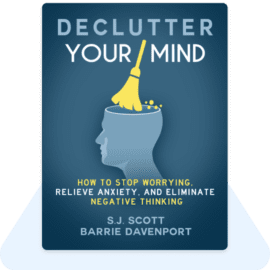

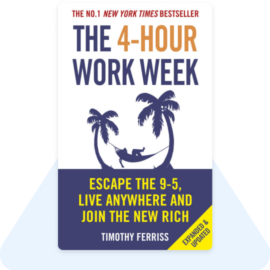
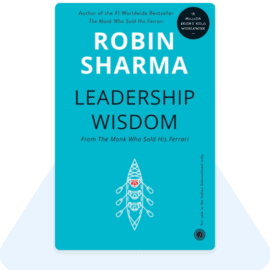

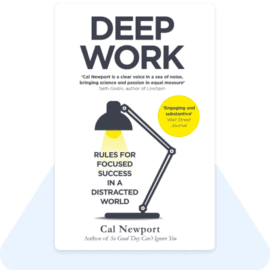
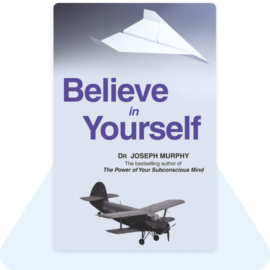



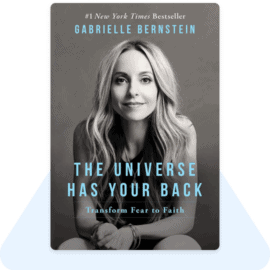

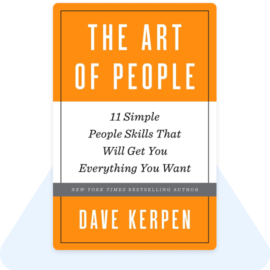
Key Take aways which I really feels is needed for me now
-Be present and mindful in your relationships to prevent conflicts and mental distress from human interaction.
-Keep your home & digital world organized to remove distractions that distract you from your values, priorities, and goals.
12-01-2023-Declutter Your Mind Book (Written by Barrie Davenport and S.J. Scott) Key Learnings:
Be present and mindful in your relationships to prevent many conflicts and mental distress that come with human interaction.
Keep your home & digital world organized to remove distractions that pull you away from your values, priorities, and goals.
Thank you, Amit sir